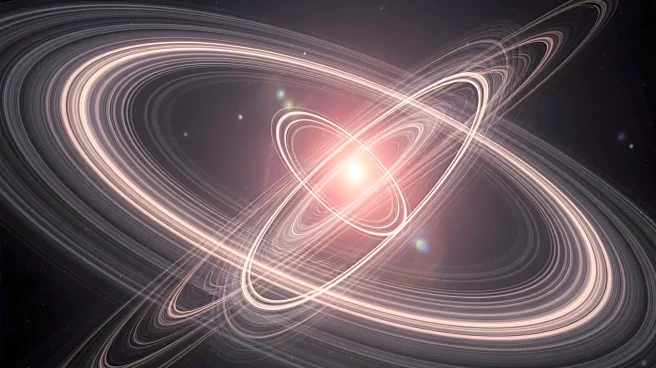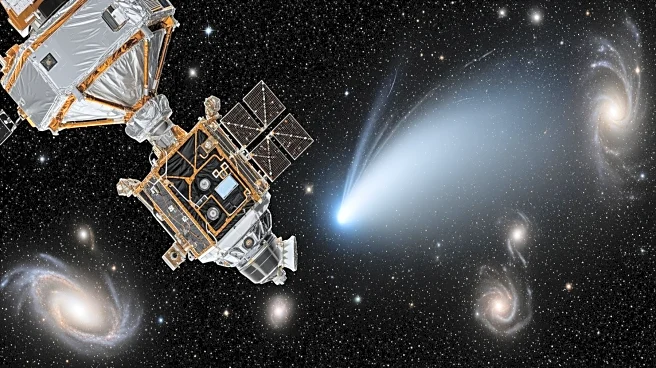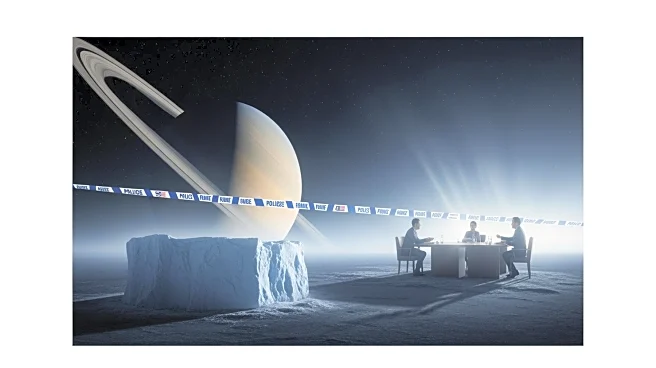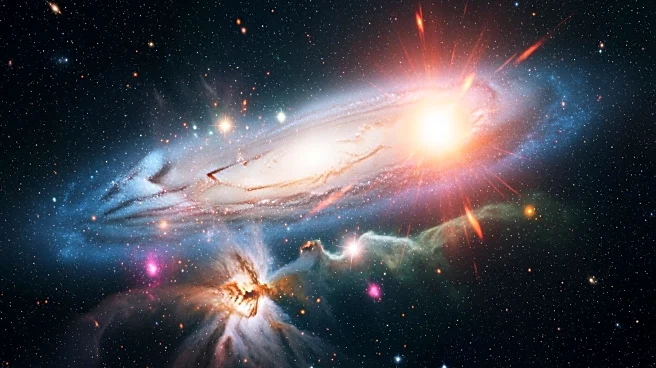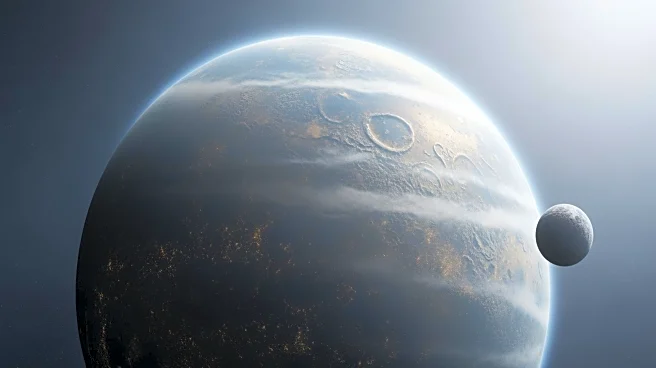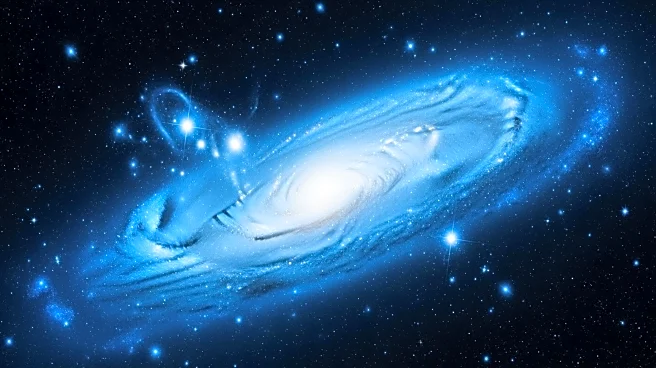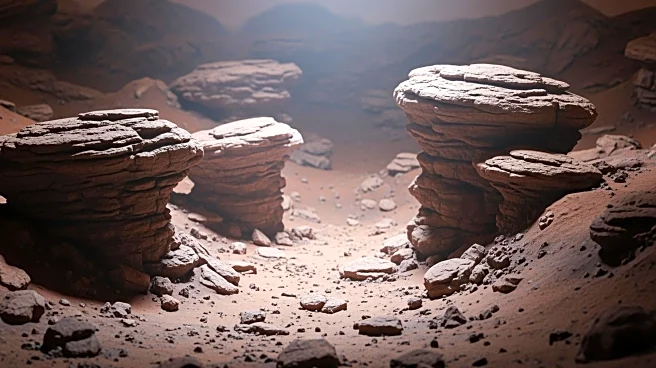What's Happening?
A recent study utilizing data from NASA's James Webb Space Telescope (JWST) has challenged previous assumptions about mini-Neptune exoplanets. These planets, which are smaller than Neptune but larger than Earth,
were previously thought to be covered in global magma oceans due to their dense hydrogen-helium atmospheres and intense heat. However, the JWST data indicates that these planets may have solid surfaces instead. The telescope detected heavier molecules in the upper atmosphere of a mini-Neptune, suggesting a thicker and more pressurized atmosphere than previously believed. This pressure could be sufficient to transform molten rock into solid form, akin to carbon turning into diamond under pressure. This discovery overturns the notion that all mini-Neptunes are necessarily magma-covered and provides new insights into their atmospheric composition and surface characteristics.
Why It's Important?
The findings from the James Webb Space Telescope have significant implications for our understanding of planetary formation and the search for habitable worlds. Mini-Neptunes are among the most common types of planets in the galaxy, and the revelation that many may have solid surfaces challenges existing models of planetary formation. This discovery could alter the way scientists search for Earth-like planets, as it provides new criteria for categorizing exoplanets based on their surface and atmospheric properties. Understanding whether planets are solid or molten is crucial for interpreting their surface chemistry, atmospheric behavior, and internal structure. The study highlights the potential for next-generation telescopes to redefine cosmic theories and expand our knowledge of planetary systems beyond our own.
What's Next?
The study's findings may prompt further investigations into the atmospheric and surface properties of mini-Neptunes, using both the James Webb Space Telescope and other observational tools. Researchers may focus on identifying more mini-Neptunes with solid surfaces to refine models of planetary formation and evolution. Additionally, astronomers could adjust their search strategies for potentially habitable planets, considering the possibility of solid-surfaced mini-Neptunes as candidates. The study underscores the importance of continued exploration and observation to enhance our understanding of the universe and the diverse types of planets it contains.
Beyond the Headlines
The discovery that mini-Neptunes may have solid surfaces rather than magma oceans could have broader implications for the study of exoplanets and the search for life beyond Earth. It challenges the assumption that other solar systems would resemble our own and suggests that rocky versus molten planets may evolve differently. This could lead to a reevaluation of the conditions necessary for habitability and the potential for life on planets with solid surfaces. The study also highlights the role of advanced telescopes like the JWST in providing new insights into the composition and characteristics of distant worlds, paving the way for future discoveries in planetary science.


